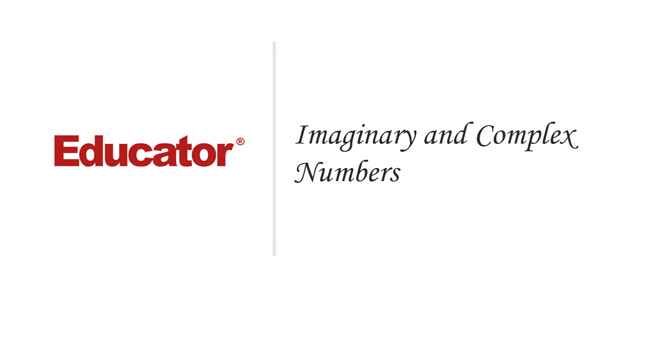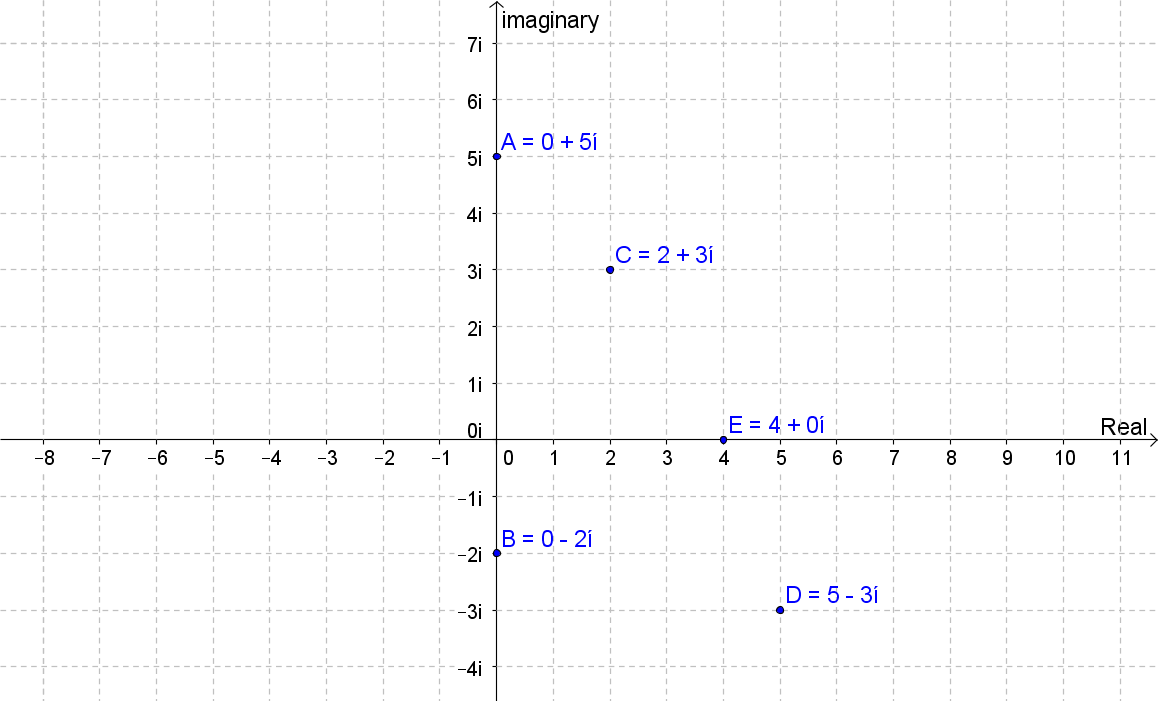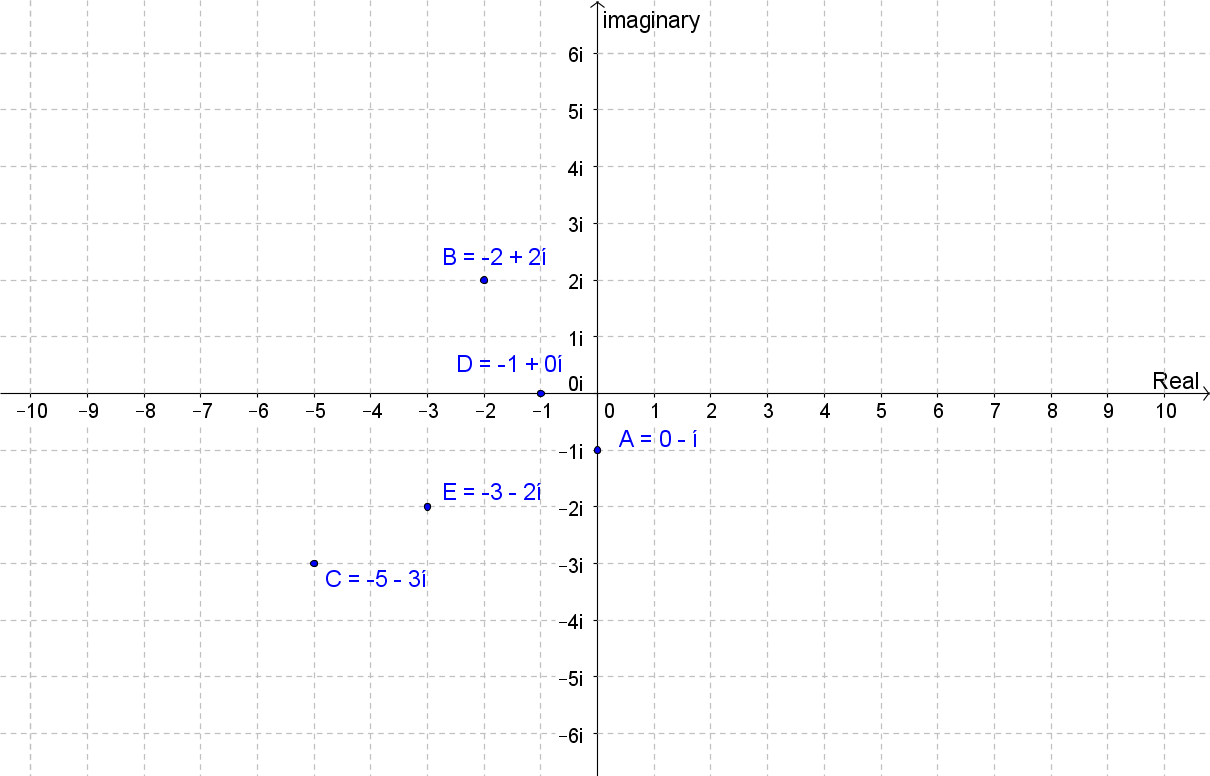Connecting...

This is a quick preview of the lesson. For full access, please Log In or Sign up.
For more information, please see full course syllabus of Algebra 2
For more information, please see full course syllabus of Algebra 2
Algebra 2 Imaginary and Complex Numbers
Lecture Description
Imaginary numbers are the square roots of negative numbers and all the properties of square roots extend to radicands containing complex numbers. Imaginary numbers are part of the complex number system. This system allows us to find the square roots of negative numbers, which was impossible to do in the real number system. You'll learn how the square root of -1 is defined and how to use that definition to find the square root of any other negative number. A complex number has two parts: the real part, and the imaginary part. In the lecture, you'll learn when the two complex numbers are equal, and how to apply operations like addition and multiplication in this number system.
Bookmark & Share
Embed
Share this knowledge with your friends!
Copy & Paste this embed code into your website’s HTML
Please ensure that your website editor is in text mode when you paste the code.(In Wordpress, the mode button is on the top right corner.)
×
Since this lesson is not free, only the preview will appear on your website.
- - Allow users to view the embedded video in full-size.
Next Lecture
Previous Lecture









































 Carleen Eaton
Carleen Eaton Grant Fraser
Grant Fraser
 Answer Engine
Answer Engine





1 answer
Fri Mar 8, 2019 1:46 PM
Post by Kenneth Geller on January 30, 2019
Is not (A + B) times (A-B) = to A squared - B squared not as you noted A sq+ B sq
1 answer
Sun Oct 7, 2018 2:59 PM
Post by Haiyan Zhang on September 22, 2018
In 26:20, you should have put a parentheses around -2, otherwise the answer would be -4 not 4.
1 answer
Sun Aug 12, 2018 9:35 PM
Post by Jerry Xu on July 31, 2018
i is not defined as sqrt(-1). It is defined as i^2 = -1, there is a small difference
1 answer
Sat Nov 1, 2014 4:14 PM
Post by Larry Oldham III on October 21, 2014
How would you solve i^2 + i^3
1 answer
Fri Oct 10, 2014 12:10 AM
Post by Sangeeta Chaudhari on September 27, 2014
Hello Dr. Carleen! I loved your lecture but I don't understand the absolute value part in example 1:Simplify Complex numbers. Can you please explain that because I watch your other videos and I just don't know when to use absolute values. Thanks!
1 answer
Thu Jul 31, 2014 6:52 PM
Post by Prashanti Kodali on July 16, 2014
Dr. Eaton I was doing practice problems and I am unsure if I got this question correct. The question was 3i(2i+4i-6). The answer I got was -12-24i. Can you tell me if I got this question right? Thank you so much!
1 answer
Sun Oct 20, 2013 11:26 AM
Post by dayan assaf on October 19, 2013
so if the question was 1+i, would the imaginary part be 0 or 1?
2 answers
Last reply by: Joshua Chen
Thu Jun 18, 2020 10:22 AM
Post by Juan Herrera on September 19, 2013
Difference of two squares:
a^2-b^2 = (a+b)(a-b)
1 answer
Sat Sep 14, 2013 2:54 PM
Post by Chateau Siqueira on September 3, 2013
Where can a find a Lecture about " Difference Quotient" ? Thanks
1 answer
Sat Sep 14, 2013 2:52 PM
Post by Tami Cummins on August 13, 2013
Dr. Eaton in the last example problem when using the short cut and squaring the "b" term which was 2 you didn't include the i's as part of the b term but in the previous sample division problem you did. In the previous sample problem could you say that i had a coefficient of 1 and squared that instead just for consistency?
1 answer
Sat Jul 27, 2013 10:11 AM
Post by Aleksander Rinaldo on July 10, 2013
Under divison, you used (a+bi)(a-bi)=a^2+bi^2....... Why would it not be a^2-bi^2....
0 answers
Post by Victor Castillo on January 24, 2013
Who decided we need imaginary numbers Peter Pan?
0 answers
Post by Victor Castillo on January 24, 2013
Whaaaaat?
2 answers
Last reply by: Norman Cervantes
Mon Apr 29, 2013 12:24 PM
Post by Daniel Cuellar on October 17, 2012
why do you not simplify your answer at the end by dividing everything by 2? just as you would a normal fraction??? please explain.
2 answers
Tue Jul 3, 2012 7:20 PM
Post by David Burgoon on June 27, 2012
Is it necessary to factor out the i in the equations? It looks like you could just add/subtract them. If you could provide an example that supports why it is important, that would help.